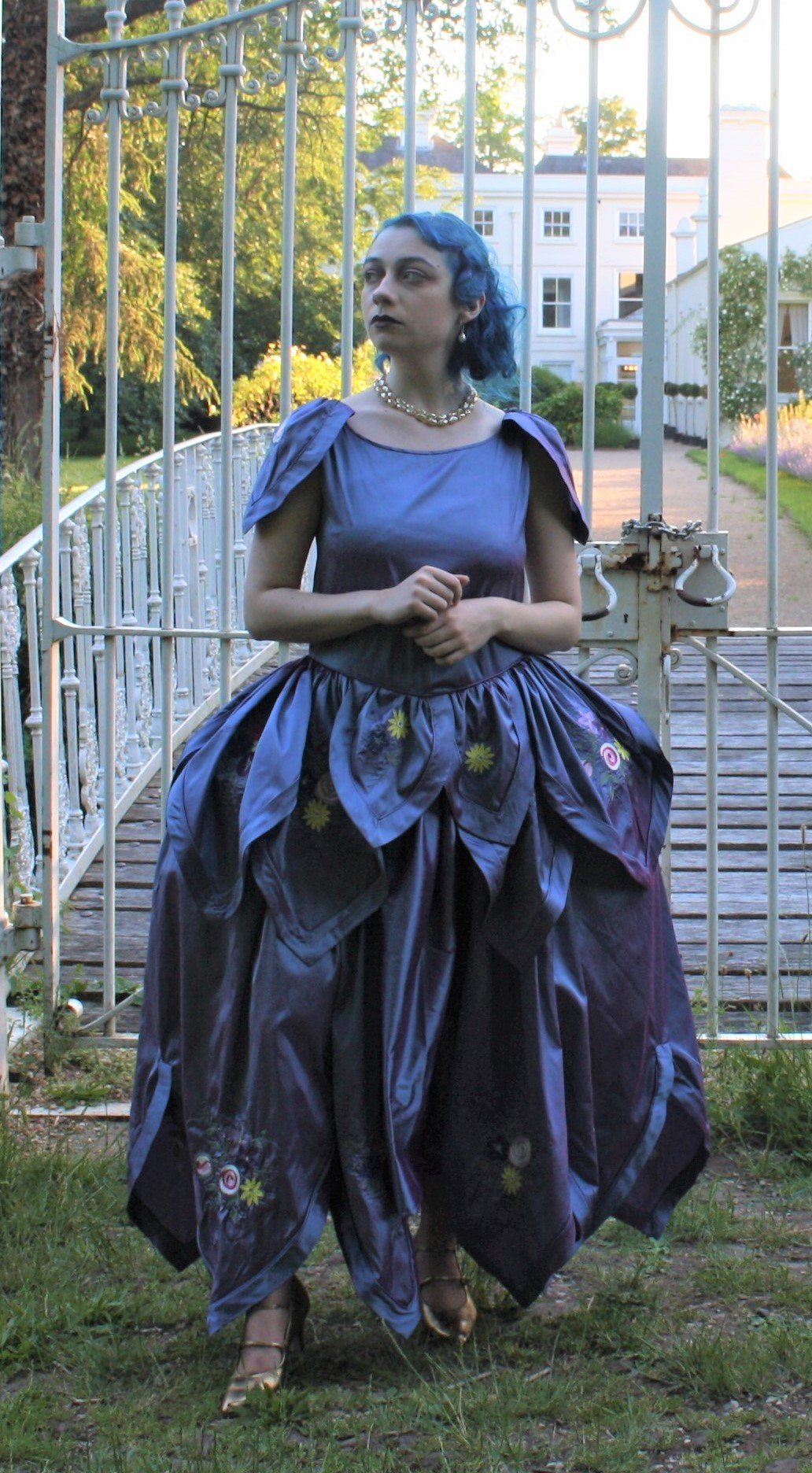Final Project - 1924 Lanvin Robe de Style (National Museums Scotland)




This is my final project for my degree in Costume Interpretation. I chose to recreate a 1924 Lanvin Robe de Style dress that is in the collection at National Museums Scotland in Edinburgh. This dress is a full panniered silk dress in ‘bleu de lanvin’ with polychrome silk Point de Beauvais embroidery on 20 petals around the skirt and shoulders.
I made this dress in a shot blue-purple dupion, and embroidered it in silk floss by hand, taking approximately 215hrs (not including framing or finishing).




Above is a photo I took going to see the original dress in Edinburgh, and my working diagram. Using photos I took, from the website, and of the conservation of the dress, I was able to workout the layout of the embroidery and general construction of the dress. From this it was clear that the dress had no integral panniers, the panniers providing the shape of the skirt would then be seperate - probably attached to a slip.
Here you can see my initial toile of the slip and panniers, and the dress overall.





After I worked out the layout of the embroidery, I drew out the individual designs, taking care with proportion. There are 4 different large designs - which are repeated around the skirt hem and peplum, and 4 different small ones, used once each on the peplum centre front, and each shoulder. The embroidery was worked on the silk over a layer of coarser linen - from conservation photos of the original garment it was worked in a similar way. This ensured that the silk didn’t contract as much under the tension of the embroidery. It also allowed me to work on a skirt panel without having to frame an entire piece of material several metres long. The linen was cut away when the embroidery was finished.
I used 8 different shades of a silk floss from Devere Yarns, and 2 different metallic Sajous Fil au Chinois threads. Overall this project used about 800m of silk thread and 500m of metallic thread.
Above is a small sample of the embroidery, I pricked the embroidery designs and used a heat erasable pen to transfer them to the silk. I worked the silk sections first, working from the right side - as Point de Beauvais uses the chain stitch created in Tambour embroidery as the decorative focus. Then I flipped the frame and worked the metallic thread from the reverse to outline the floral designs. After this I sewed in the ends of the thread, and cut the linen away.



For the supportive underpinnings that give the dress its shape I made a crepe de chine slip with attached panniers. The slip was french seamed, with small double box pleats on each hip to allow for movement. The panniers were made of cotton bobbinet and plastic whalebone. This combination allowed the panniers to be as strong and light as possible.
I also made a simple bandeau bra from crepe de chine and vintage lingerie lace, using a pattern from The Underpinnings Museum, this gave my model the 20’s bustline the dress was cut for.







A selection of the finished embroidery!